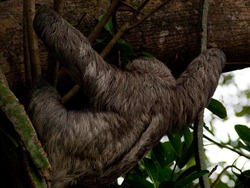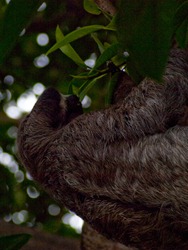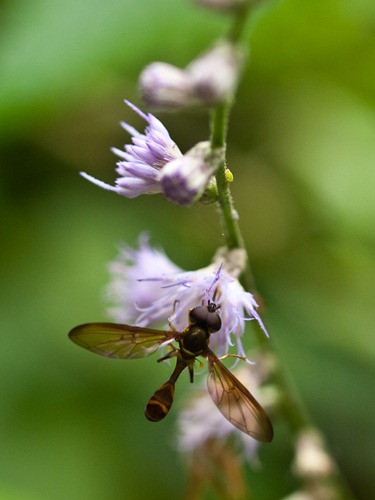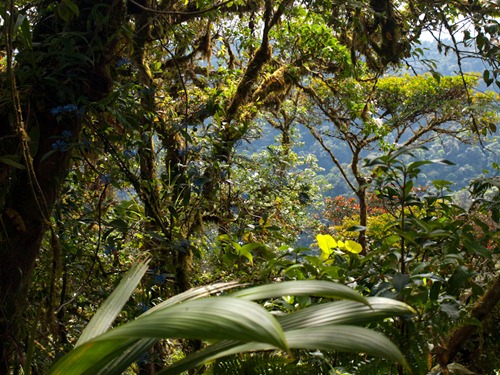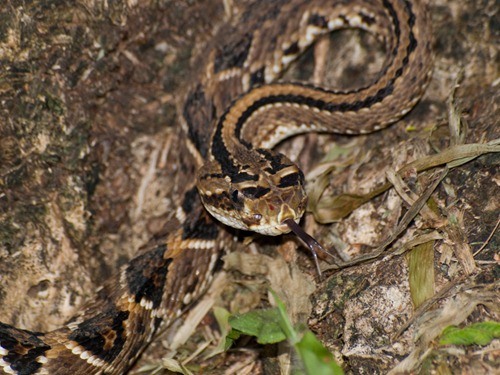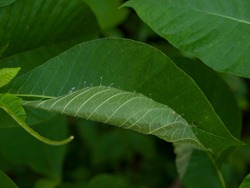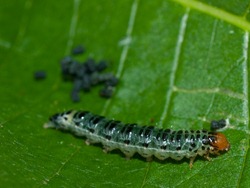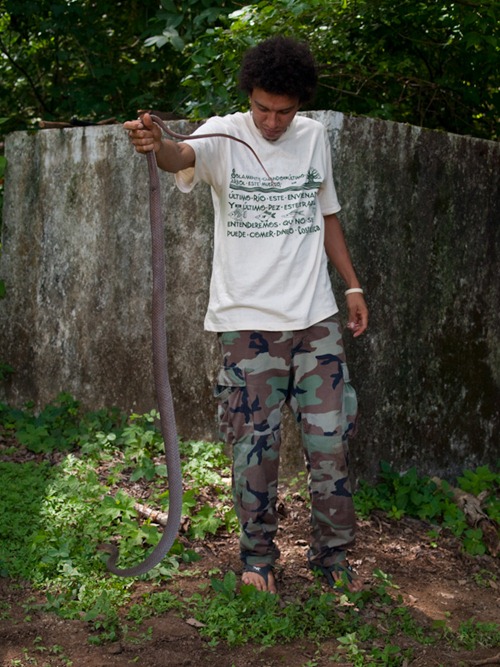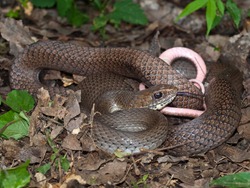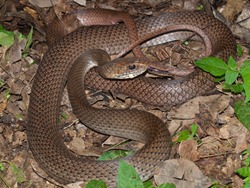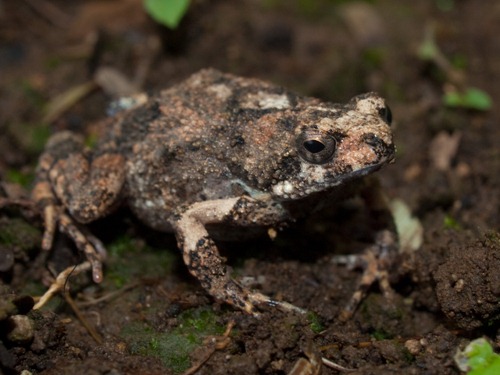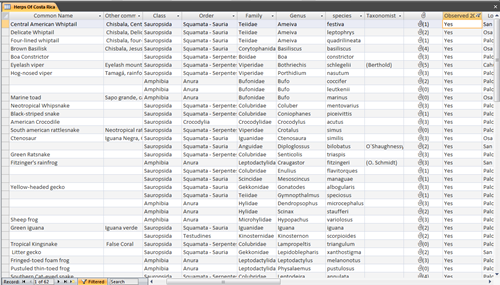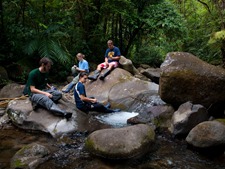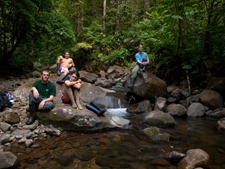I didn’t shoot the greatest photographs, but I wanted to share some photos of a sloth on the Universidad de Costa Rica-San Pedro campus. In the bosquito (small forest) surrounding a stream that runs though the center of the campus, there is a large diversity of wildlife, including sloths, momots, and various parrots. It was incredible to see these kinds of animals, living wild, on a college campus in the center of a dense city.
This sloth had ventured away from the bosquito to feed on a tree outside the biology department. As I was studying an aquatic invertebrate collection in a lab, I noticed a group of people looking up into the tree outside the windows. I eventually ventured out to see and discovered this sloth, but it was a bit to late in the day and dark to get decent photographs with my relatively slow (high f-stop) telephoto lens.

